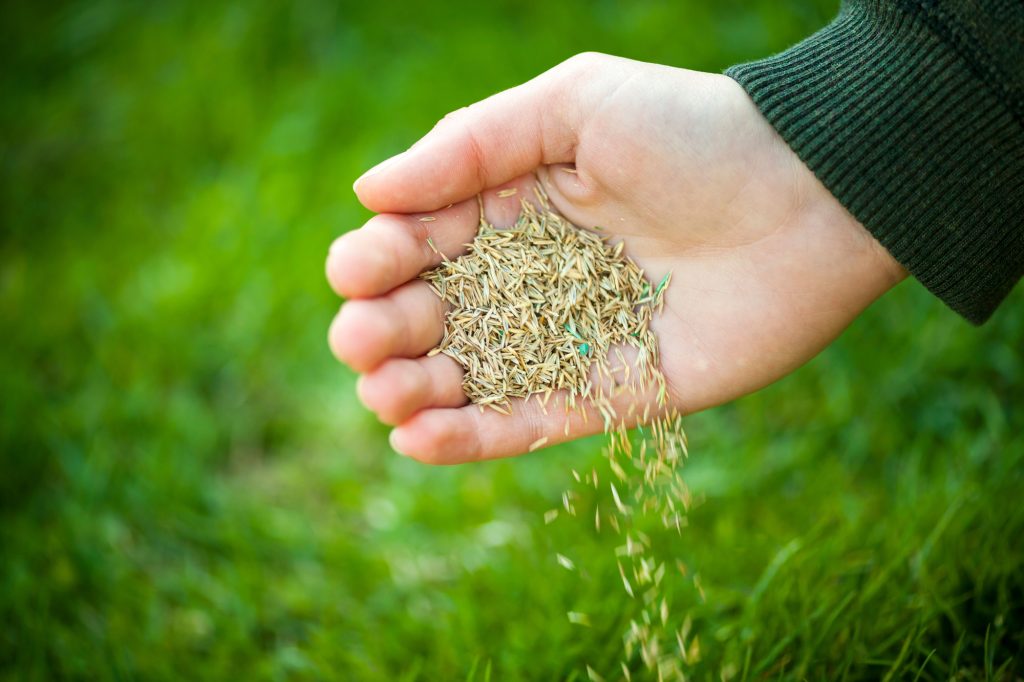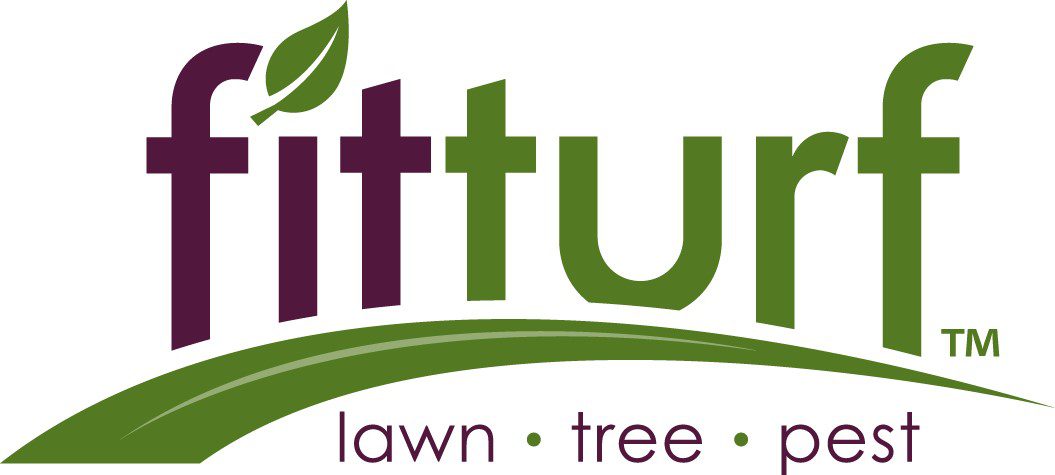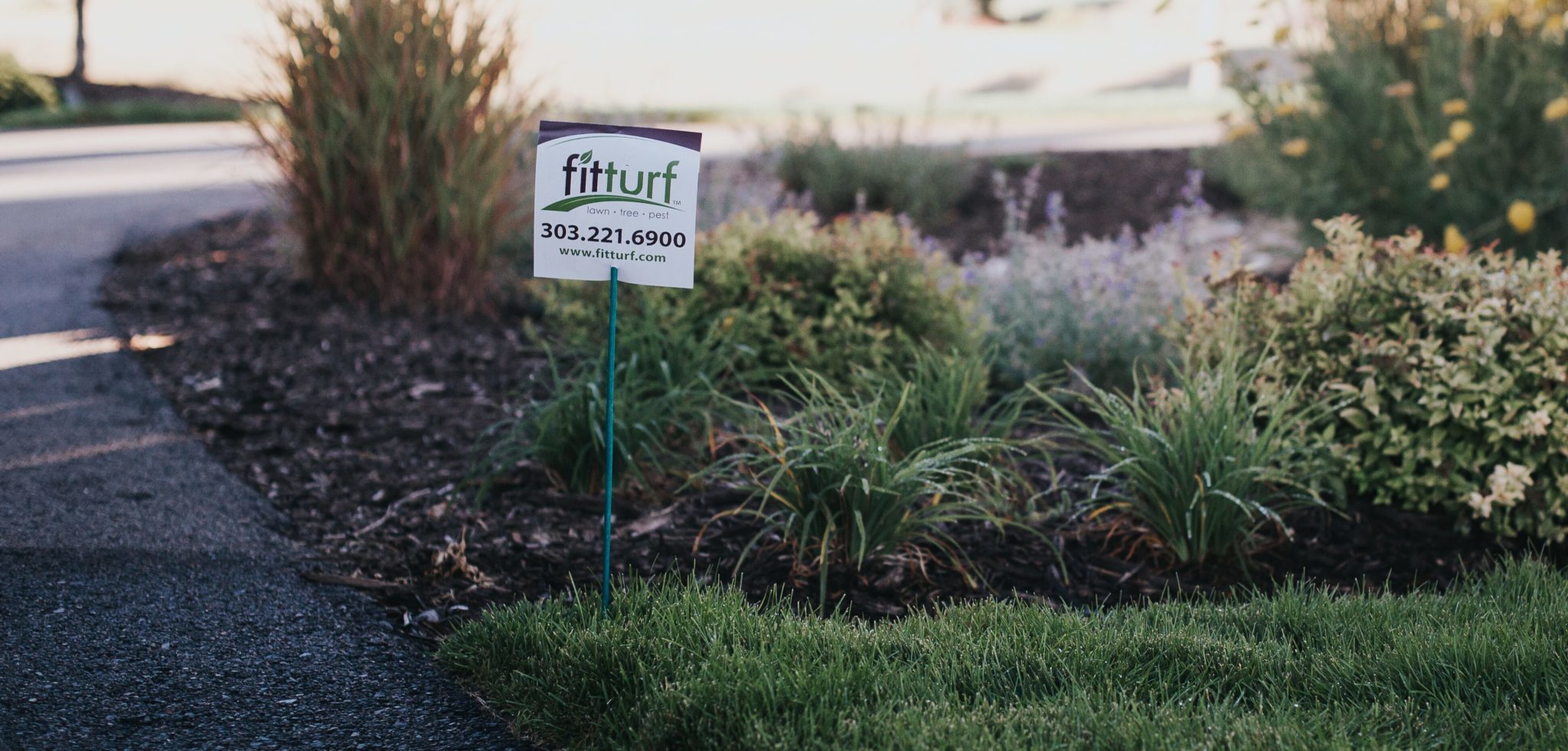Denver Lawn Grass Seed Sprouting Times – Fit Turf

If your lawn is looking patchy and you want to make sure it is green and lush next Spring, one option might be to overseed it. For the best results, you need to choose the right grass and the right timing. Grass seed sprouting times vary so it’s important to overseed at the right time with the right type of grass. Understanding how long your new grass will take to sprout is also a key part of the picture. The Denver lawn care pros at Fit Turf are here to help! Keep reading for the tips you need before considering overseeding your lawn.
When Should You Plant New Grass?
First of all, you should consider overseeding your lawn if:
- Your lawn is showing wear and tear, particularly if you have kids or pets
- Your lawn has dead spots
- Your lawn is looking patchy, thin, or dull
- You have an increased weed problem. Planting more grass leaves less space for weeds
In Colorado, you should plant new grass in Spring or Fall, when the temperature is cool and moisture is abundant. This gives your new grass the best chance to survive.
What Kind of Grass Should You Use?
Ideally, you should use seed of the same type that is already in your lawn. If you just moved in and aren’t sure, your team at Fit Turf can help identify the type of grass you have. The most common grasses in Colorado are Kentucky blue and fescue because our climate is best suited to cool-season grasses.
In a few cases, you may want to change the grass type, such as if you have a pest issue. In this case, always contact a professional so you can make the best decision for you and your lawn.
How To Prepare Your Lawn for Overseeding
Before overseeding your lawn you should mow it slightly shorter than usual, typically to about two inches. You don’t want to scalp your grass, but you also want to make sure the seeds make proper contact with the soil and can germinate properly. You also need the seedlings to get enough light.
You should also aerate your lawn to reduce compaction and open gaps in the grass for your seeds. Due to the cost and weight of the equipment, most homeowners prefer to hire a professional rather than to buy or rent one. Also, be aware that over-aerating your lawn or aerating when your lawn is stressed could cause more harm than good.
Next, take a soil sample to see if your lawn could use some fertilizer. If the soil level indicates fertilization is needed, use a quick-release fertilizer high in phosphorus. A DIY soil test kit could do the trick, but if you’re serious about beautifying your lawn, this is another thing it’s good to talk to an expert about.
How to Overseed Your Lawn
You will need a drop or rotary spreader. If using a drop spreader (better for smaller lawns), you want to overlap your lines a little bit to ensure coverage.
You want to hit the typical seeding rates. For Kentucky bluegrass, this is 0.5 to 1 lbs per 1,000 sq ft. For fescue, it’s higher, three to four pounds.
Once you have spread the seed and fertilizer if needed, use a verticutter to ensure the seed hits the soil. If you don’t have one, a leaf rake works well.
Aftercare for Overseeding
The most important factor is watering. The overseeded area needs to remain moist until the grass has germinated, but be cautious to not overwater, or your seeds will drown.
You may need to water two to four times a day in short-duration bursts, taking into account any rainfall and conditions. Bear in mind that bluegrass takes two to three times as long to germinate as fescue. Fescue will start to emerge at about seven days, but bluegrass may not show up for 21 days. You should not mow the grass for at least three to four weeks after the new grass germinates. If you are planting in the fall, you should not mow again until the spring.
How Often to Overseed
Many professionals recommend overseeding your lawn every year in the spring or fall. However, if your grass sees heavy use, then you may want to add more seed in the spring. If it only sees light use (say you have no kids or pets and seldom walk or sit on your lawn), then it may not need to be overseeded as often.
Generally, you should overseed when your lawn looks like it needs it, but an annual schedule is good for higher use lawns, such as if you have a dog.
Pitfalls
There are a number of mistakes you can make that can cause overseeding to fail. Because of this, we recommend contacting a professional to overseed or reseed your lawn.
Here are some common problems, though:
- Poor timing. You should not seed grass in the summer or winter. Colorado grasses are best seeded in the fall, but the spring is also a reasonable choice.
- Underwatering. Once stored seed is exposed to water, it will die if it is allowed to dry out.
- Overwatering. It’s easy to drown grass seed. Overwatering can also wash the seed out of your lawn. Getting the right amount of water is a key reason to seek help.
- Planting a grass type that doesn’t match the rest of your lawn. It may not do as well and you may end up with an obvious dividing point if only overseeding part of the lawn. The new grass may not match the old in color or in growing speed. This often happens when people don’t know what type of grass is in their lawn after moving to a new home.
- Neglecting to fertilize or seeding in soil that has the wrong pH. This can cause lack of germination, slow germination, or sickly plants that can’t compete with weeds.
- Seeding after using a pre-emergent weed killer. The weed killer will kill your new grass as well as the weeds. Most pre-emergent herbicides last between 8 and 12 weeks, but check the label on the product you used.
- Not properly preparing your lawn with mowing and aeration.
Issues with watering are the most common problem, along with not understanding the nutrient needs associated with your soil type.
Hopefully this guide sets you well on your way. If you’re unsure about what type of grass you have, want to make sure you plant at the right time for your grass seed sprouting time, or if you’d just like to avoid the hassle of equipment rental, give us a call. The Denver lawn care professionals at Fit Turf are ready to help and we serve communities all along the Front Range. We can take care of overseeding and all of your lawn care needs.

